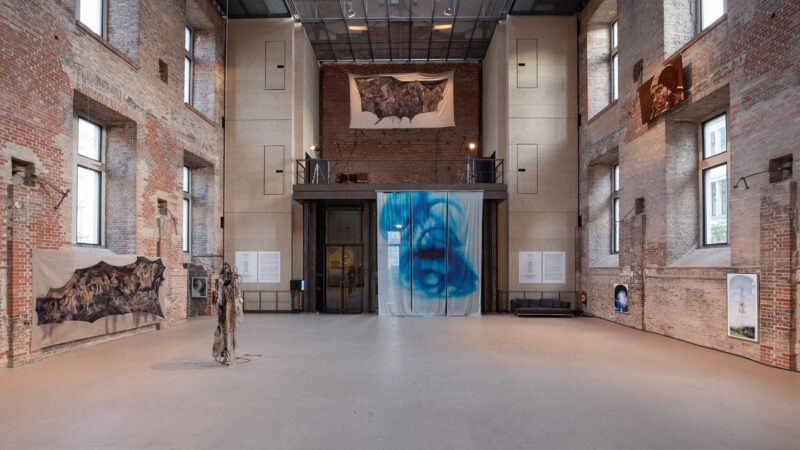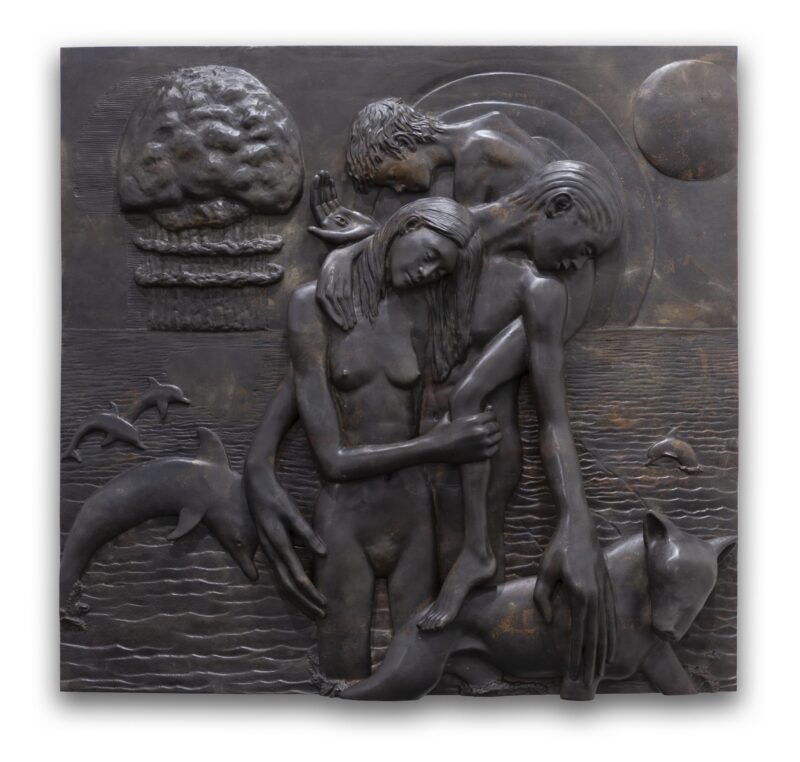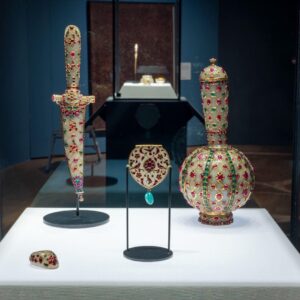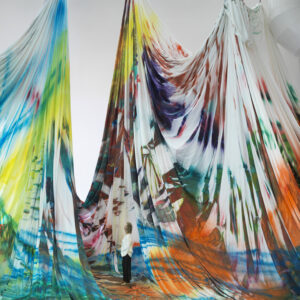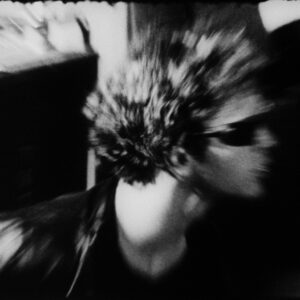There’s something about Art Cologne that feels different to other art fairs. As the longest-running contemporary fair, it turns 57 years old this year. While the trend with other major fairs seems to be a lean into biennalisation and injected curation, Art Cologne has a certain pragmatic air of being exactly what it is: a place to buy art. To guide your exploration, here are 10 standout exhibits that captured our attention.
1. Jens Pecho, Been There Done That, 2024, Ebensperger
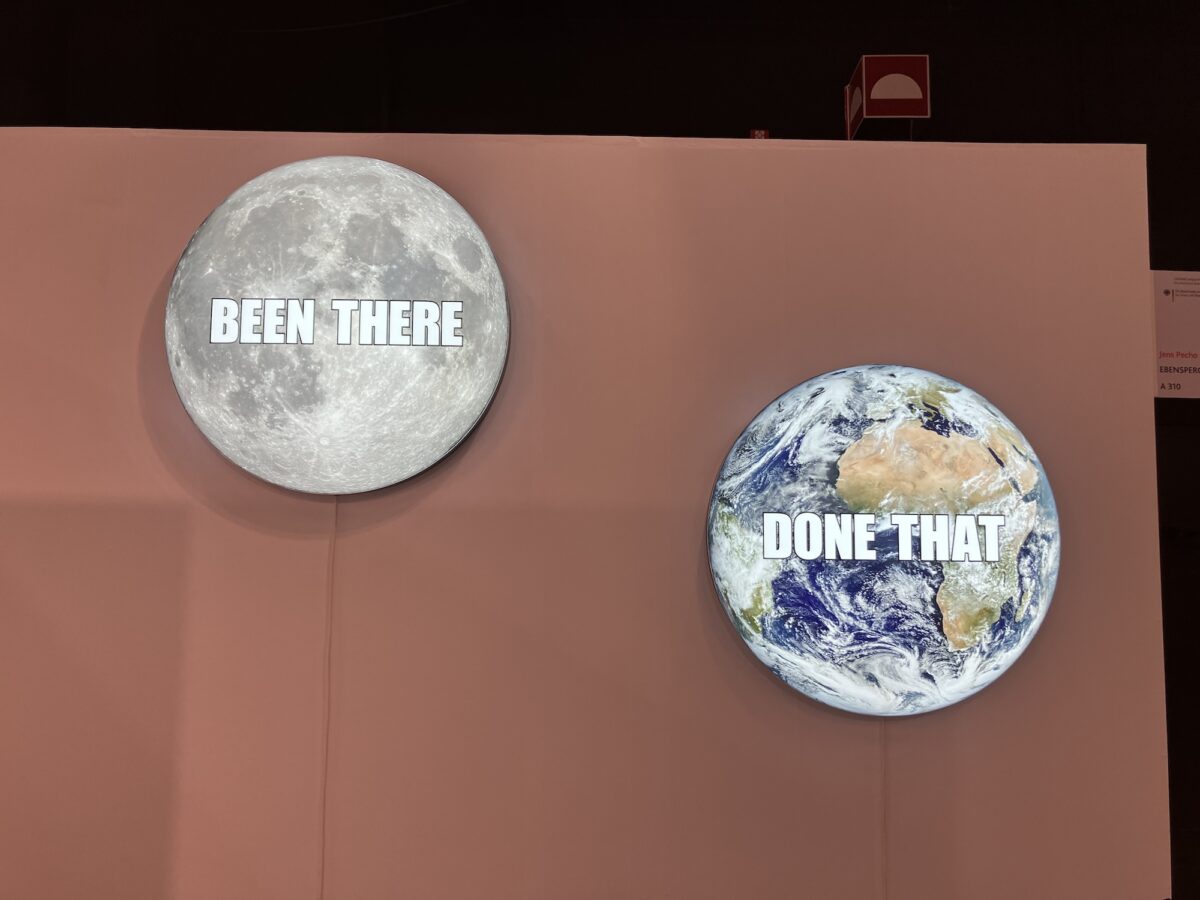
Only when we have lost something can we begin to conceptualise it. Recently shown in Berlin in the exhibition Things That Are Over, an identically scaled Earth and Moon hang on the wall, illuminated, idealised, yet on their way out. The work is part of a series that looks into the degradation, redundancy, and progressive states of decay. It’s no wonder the objectification of the planet feels not only timely but natural – as though its obsolescence is only a matter of time, not of fact. Jens Pecho highlights the desensitised sense of loss of a place that defines our “world”.
2. Zhanna Kadyrova, Palyantsia, 2013, Zahorian & Van Espen
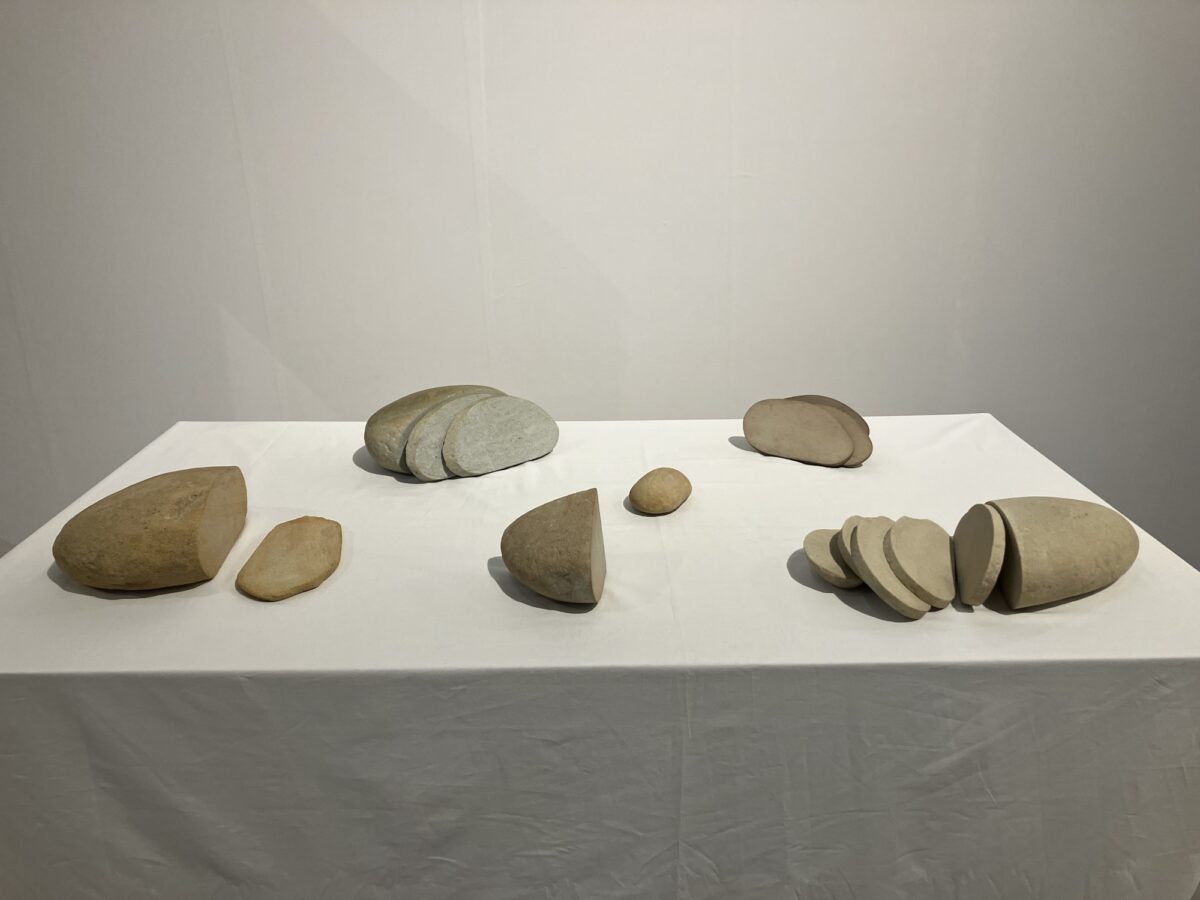
Without knowing the backstory of these serene objects, they already activate the imagination. Zhanna Kadyrova has engaged in the ultimate creative exercise, which is not necessarily creating something from nothing, but rather the immaterial transmission of an observation: unearthing that which has been there all along.
Formerly based in Kiev, Kadyrova relocated to the the Transcarpathian region of Ukraine in 2022 after the Russian invasion. After arriving, Kadyrova spent days looking for space to live, work, and exist, during which time she collected wide, round stones that had been polished by the river.
Here she began the PALIANYTSIA project, which is named after a type of round Ukrainian wheat bread that Russian occupiers are said to struggle to pronounce correctly. The name has entered into oral history and become a symbol of cultural resistance; the bread a token of recognition and endurance.
3. Henni Alftan, Nails, 2024, Sprüth Magers
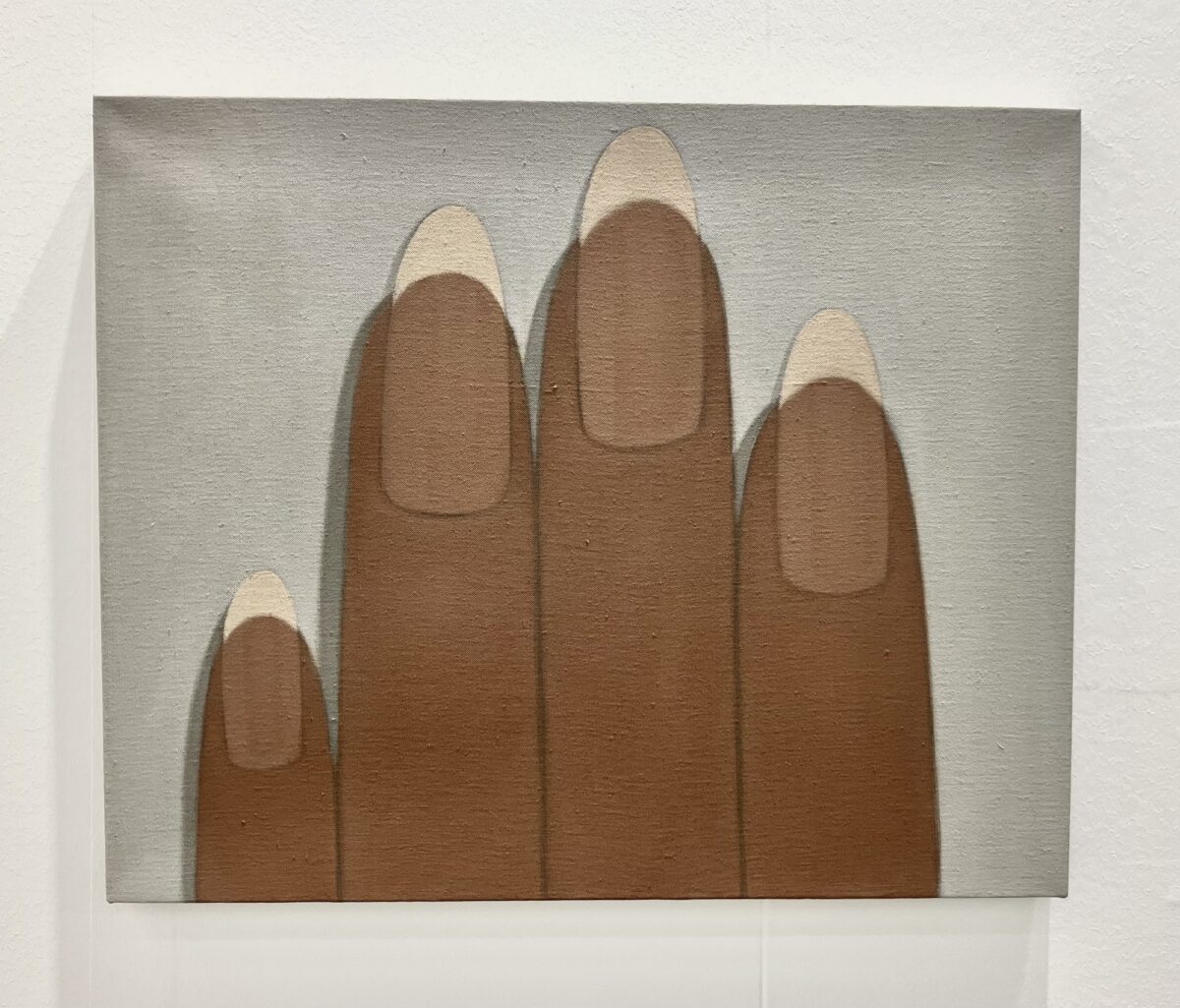
The dyptich depicts four fingers who have the stature and presence of human beings. Differentiated only by the nails, it is unclear whether they are one person’s hand on different days or perhaps modernised proposals for binary “gendered” or rather un-gendered isotopes.
Hands convey identity as much if not more than a face, and as universal transmitters of labour they are the artist’s primordial tools. The nails, however, are dead. Constantly growing, breaking, and renewing, the temporality of nails makes them expendable, like decoration. Henni Alftan not only draws attention to them, but employs them to extract a disposable identity.
4. Falk Gernegross, The Knot, 2024, Kleindienst
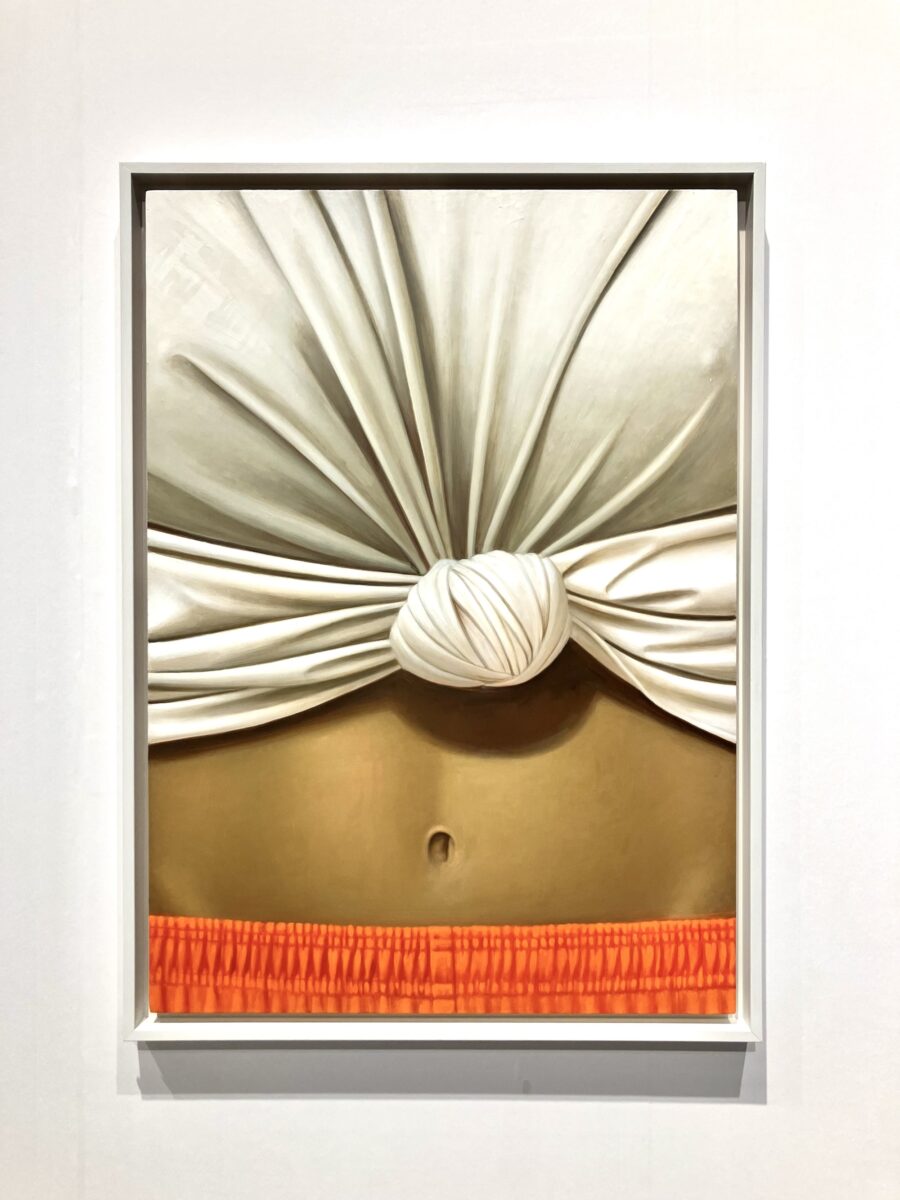
Comparatively tame when viewed in succession with his other works, Falk Gernegross’ characteristically layered painting has a lustrous underglow that is a result of his mischtechnik. Intentionally void of context, the narrative retains a sense of fantasy, fetish, and post-pubescent angst that is overtly self-conscious of the male gaze. Intimate, cartoonesque snapshots harbour a fleeting innocence and the manifestation of its dissent. The knot in the shirt seems like the indirect act of misogynistic repression, post-feminist reclamation, or microexhibitionism.
5. Elmgreen & Dragset, The Touch, 2011, Galerie Max Hetzler

A departure from the idealised bodies of classic sculpture, Elmgreen & Dragset’s figures are rather ill-fated and tragic. Having stumbled in on a nude adult man awaiting professional “touch,” it’s hard not to grimace at having discovered this lifelike stranger in such a vulnerable and wholly unsettling position. Somewhere along the line, consent was not given. Despite the reclining figure’s implied environmental context of relaxation and wellness, he seems to be equally suited for the refrigerated drawer of a mortuary.
6. Ju Young Kim, Unsent Parcel, 2022, Max Goelitz
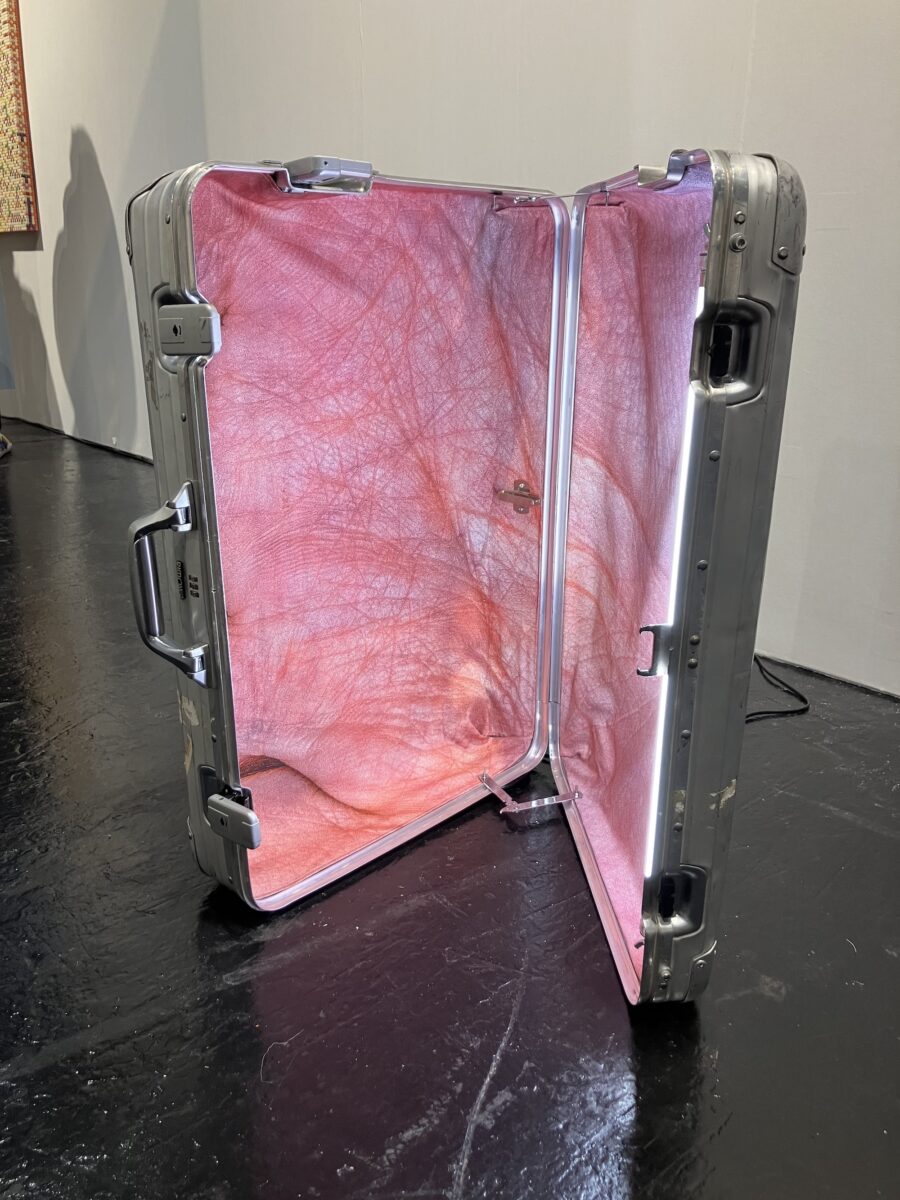
Peering inside the fleshy contents of Ju Young Kim’s suitcase feels like catching a glimpse of someone’s private, unclothed skin through a peephole. The suitcase, marked with a fictional shipping label bearing her grandfather’s former address in North Korea, represents an inaccessible home. The topographic lining, which comprises the macro texture of lines on skin, is reminiscent of the kind of hyper closeness that accompanies absolute intimacy. In the salvaging of the parcel, and the fact that it has seemingly not been sent, we understand that Kim’s reflection on home and heritage are somehow quarantined, unsettled, and unresolved.
7. Carlos Garaicoa, From the series Puzzles: Table and Lyon Mountain, 2022, Galeria Filomena Soares
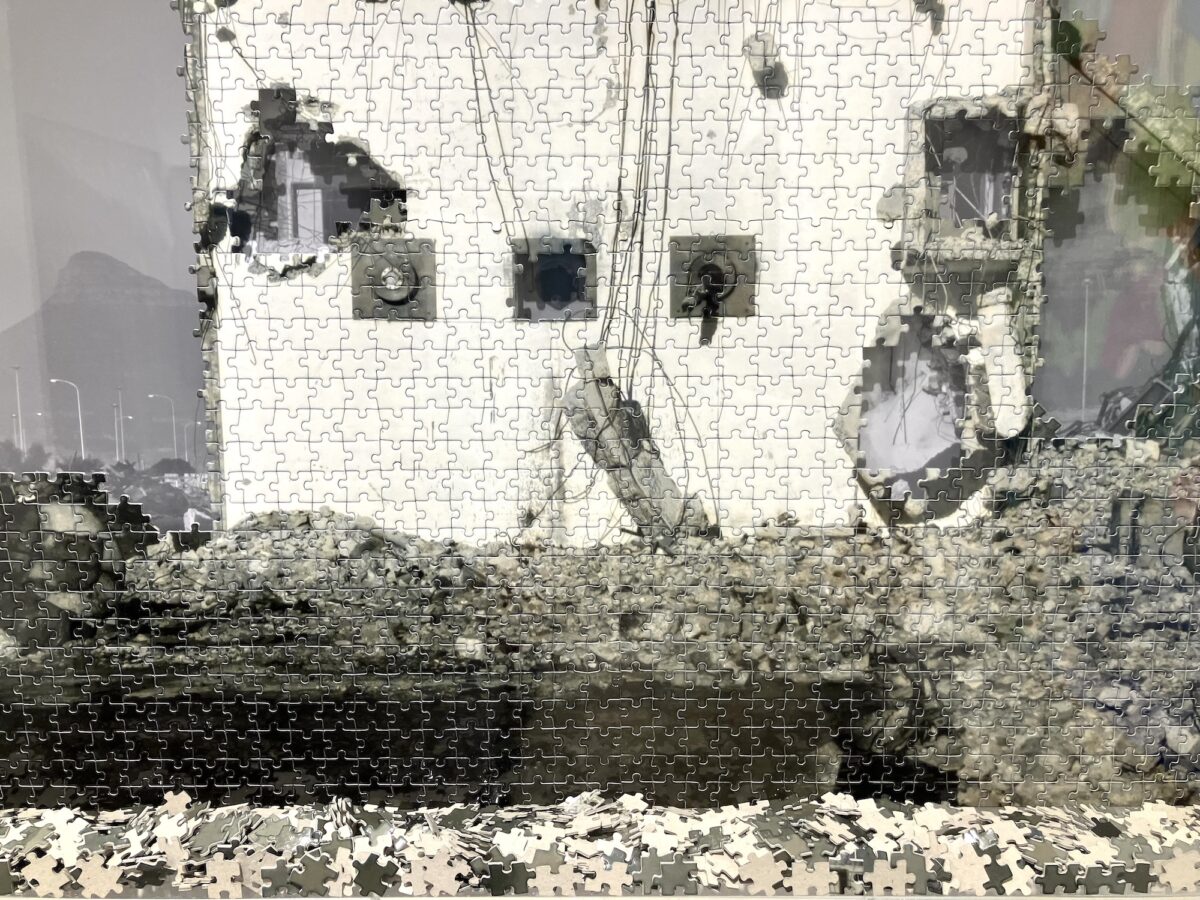
It is hard to see the deconstructed homes in Carlos Garaicoa’s puzzle compositions and not associate it with the unprecedented degree of displacement and destruction currently afoot. While the subjects are ruins of Havana, Cuba, there is an instant universality of a ruin that translates regardless of its circumstances and the crossroads incurred: rebuild or mourn?
8. Kubra Khademi, La fille et le dragon, 2023, Anita Beckers
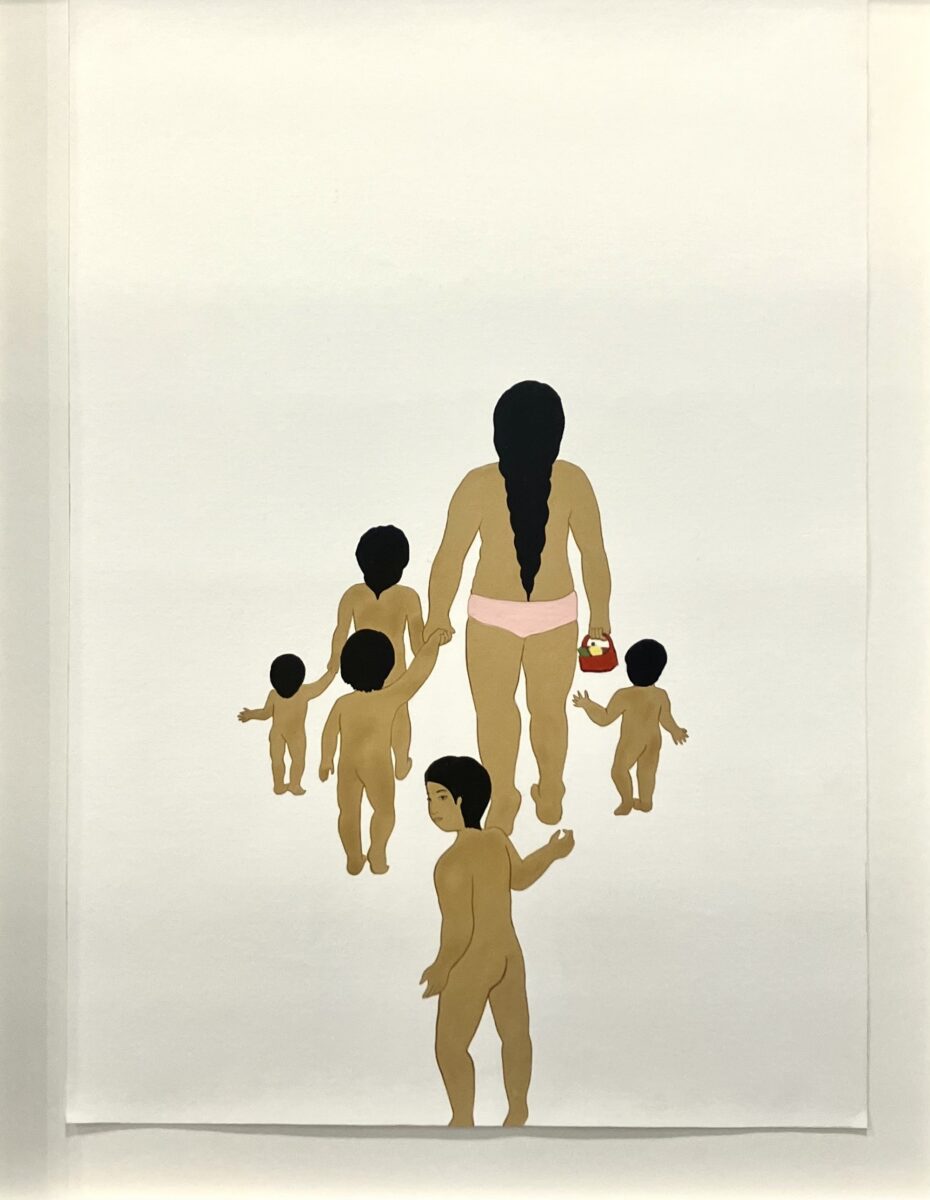
The sympathetic and emotive works on paper are excerpts from Kubra Khademi’s first graphic novel released just two months ago. Colourful drawings depict Khademi’s early life and nuclear family including nine siblings. Born in Iran to Afghan refugees, her resistance to staunch patriarchal fanaticism fuelled her pursuit to be an artist, which was evident already in early childhood. Despite the handful of drawings being selected from over 150 from the book, each image is strong enough to easily stand on its own.
9. Anne Imhof, Untitled (10am), 2024, Galerie Buchholz
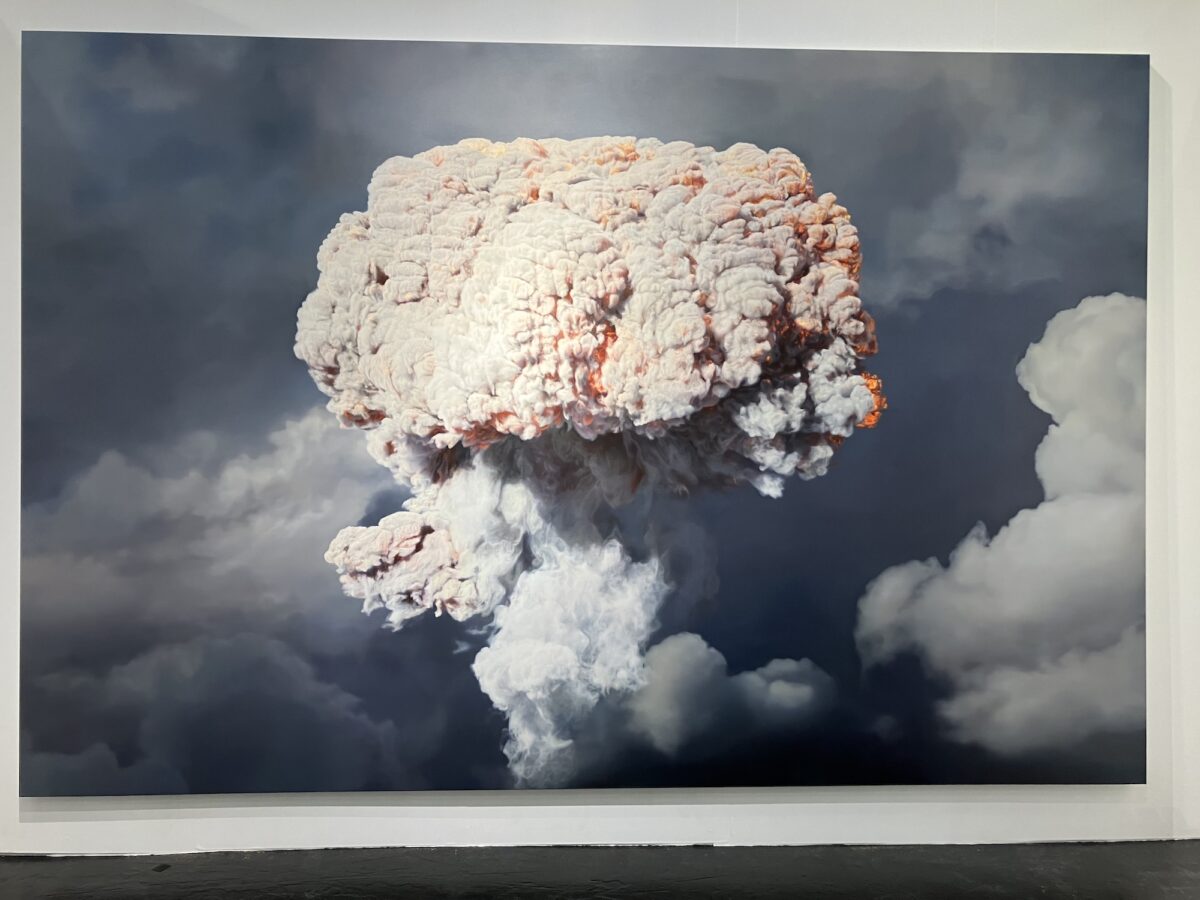
On initial encounter of this colossal canvas, one would think that it was a print. The photo realness of the painting is extraordinary, but quickly shadowed by Anne Imhof’s powerful portrayal of spectacle. As is characteristic to her work, extreme spectacle is used as a vehicle for amplification of observations about the world, rather than a criticism of them.
10. Weniger/ wenigerpunkt.de
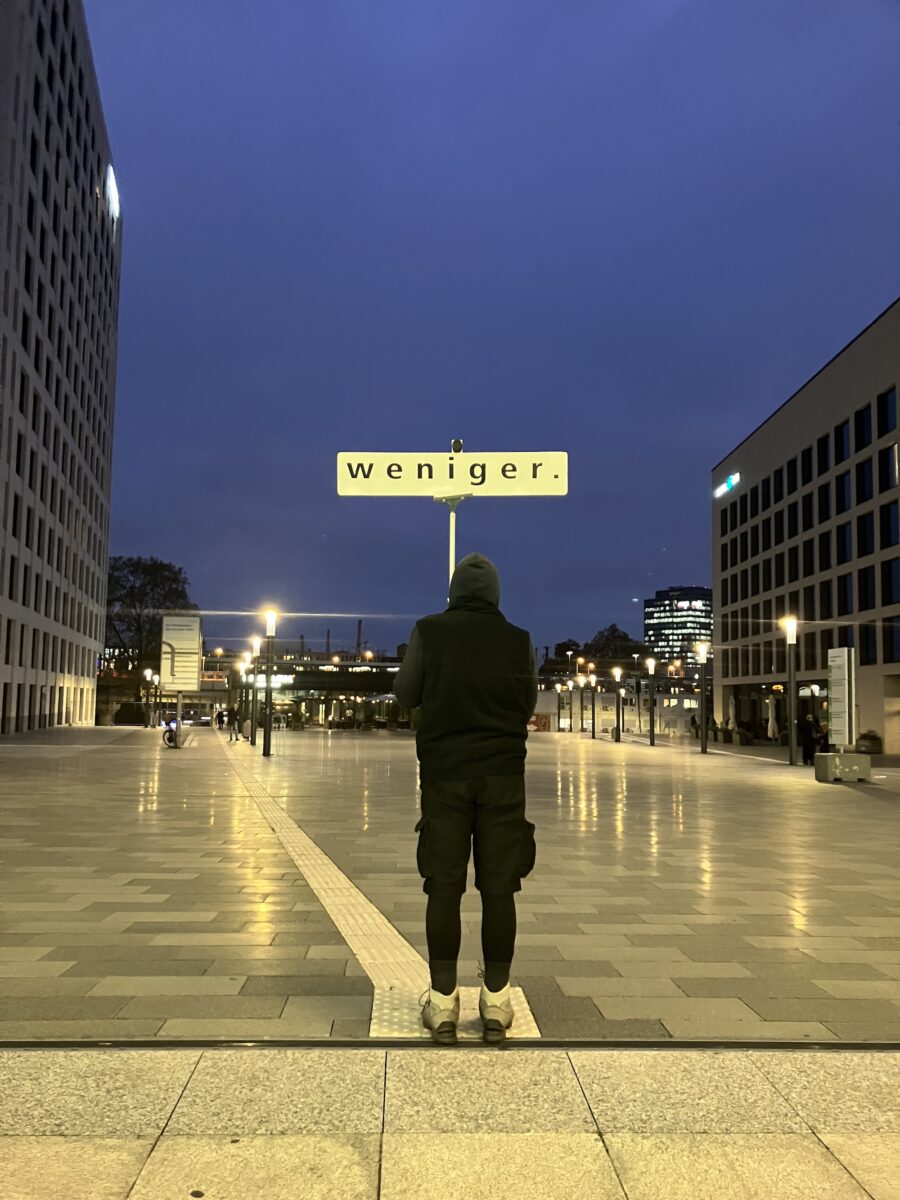
The most impactful encounter at Art Cologne was not inside the fair but outside the convention centre, where a man named Herbert was conducting a silent durational performance. As part of an ongoing series, he stood outside the fair preview during peak hours holding a sign that simply reads “weniger,” which translates into English as “less”. In an environment defined by its collector culture, extreme wealth, and capitalistic incentives, the weniger project is meant to shine light on the shackles of ownership, over fixation on commodity aspirations, and the financial corruption of the contemporary art world. His ultimate message is that the things we accumulate make us content for a short time at best, leaving behind a bottomless void that material possessions cannot permeate.
Art Cologne 7th -10th November , Koelnmesse GmbH @artcolognefair
Categories
Tags
- Anita Beckers
- Anne Imhof
- Art Cologne
- Art Cologne 2023
- Art Cologne 2024
- Carlos Garaicoa
- Ebensperger
- Elmgreen & Dragset
- Falk Gernegross
- Galeria Filomena Soares
- Galerie Buchholz
- Galerie Max Hetzler
- Henni Alftan
- Jens Pecho
- Ju Young Kim
- Kleindienst
- Kubra Khademi
- max goelitz
- Sprüth Magers
- Weniger
- Zahorian & Van Espen
- Zhanna Kadyrova
